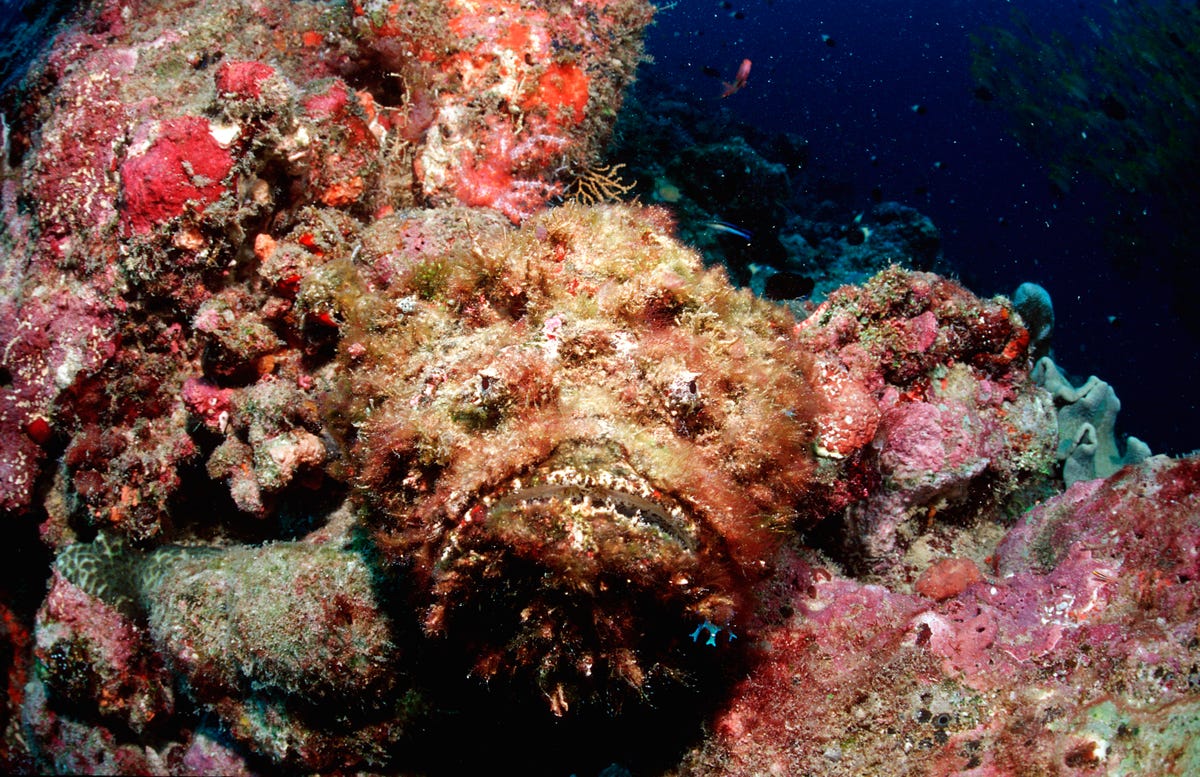15 creatures that could disappear with Great Barrier Reef
Global warming is killing one of the world's natural wonders. Home to 9,000 species, the death of the reef could hurt more than its coral.

Pygmy seahorse
This minute master of camouflage survives by adapting its body to closely resemble sea fans, the soft coral it calls home. It's just one of the many creatures that could disappear along with the Great Barrier Reef because of global warming.

Reef stonefish
The stonefish hides itself among the coral using its crusty exterior as camouflage. It's earned the title of most venomous fish in the world, thanks to two sacs of poison on each of its 13 spines. The spines have pierced the soles of shoes, so look out!
Spotfin lionfish
Don't touch those pretty dorsal fins -- they're venomous. Stealthy during the daylight hours, the spotfin lionfish is active at night, feeding on small fish and crustaceans.
Potato cod
These prehistoric-looking fish are large, curious beings, reaching lengths of nearly 9 feet. They're fond of reefs off northeast Queensland.
Clownfish
Pixar's 2003 "Finding Nemo" brought these guys to the big screen, acquainting us with their symbiotic relationship with sea anemones. They start life as males and later develop into females, a process known as sequential hermaphroditism.
Nudibranch
Vividly vibrant, shell-less and often referred to as "sea slugs", these gastropods are known to come in 2,300 individual species.
Humphead wrasse
This predator of the coral-munching crown-of-thorns starfish has been classified as an endangered species by the International Union for Conservation of Nature.
Green turtle
These endangered turtles can live to be up to 80 years old. Nearly all of that time is spent underwater. They routinely dive for four to five minutes, before surfacing for a gulp of air.
Giant oceanic manta ray
As the name suggests, these rays are, well, giant. The largest type of ray in the world, they can reach up to 7 meters in width.
Giant clam
Listed as "vulnerable" by the IUCN, these bottom feeders can live more than a century and have been recorded weighing more than 200 kilograms.
Dugong
Affectionately dubbed the "sea cow", these creatures normally eat seagrass, which grows abundantly at the Great Barrier Reef. They can live as long as seven decades.
Cuttlefish
Despite the name, these alien-looking creatures are actually molluscs. They're also among the most intelligent of invertebrates, with a huge brain-to-body ratio.
Crown-of-thorns starfish
These spiky, venomous invertebrates are one of the Great Barrier Reef coral's chief nemeses. Scientists estimate these creatures are responsible for nearly a quarter of coral destruction over the past three decades.
Box jellyfish
Extremely venomous and nearly invisible, the box jellyfish can extend its translucent tentacles up to 3 meters. Good luck, swimmers.
Barrel sponge
Sponges filter and clean the ocean, as well as serve as homes for smaller invertebrates. Similar to coral, these animals are also suffering because of changes in the ocean's temperature.

